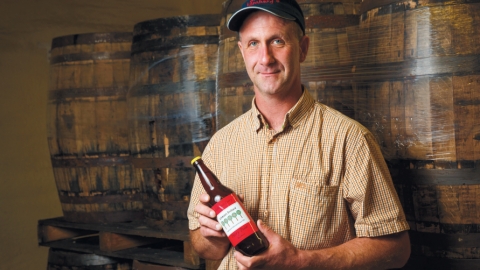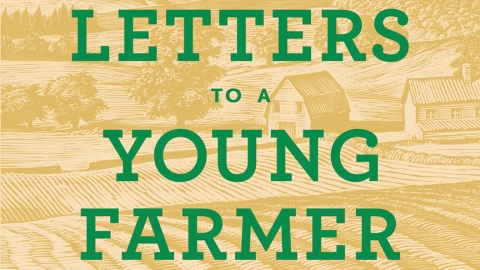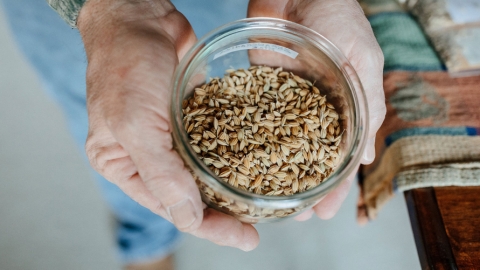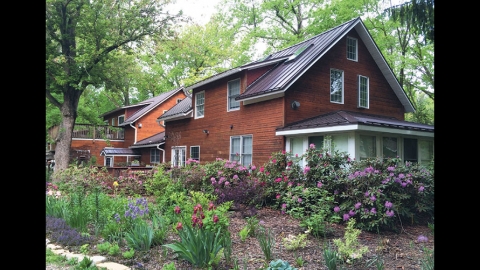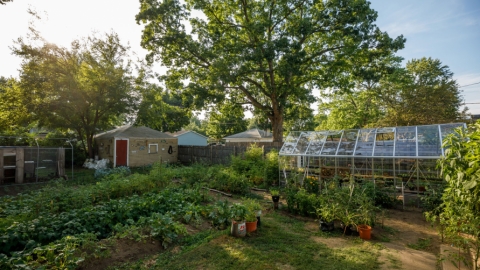Farm Bill gives Michigan farmers new opportunities
“Hemp will save America! Patriotic farmers are growing hemp!”
So trumpeted the U.S. government in 1942, in an instructional film for farmers called “Hemp For Victory” on growing hemp to supply American military and industrial efforts in World War II.
At the time, hemp had stopped being an American crop, partially due to the availability of cheaper, foreign hemp and other fibers, and partially because Congress had begun prohibiting Cannabis sativa. Industrial hemp and marijuana are Cannabis sativa plants, albeit with different levels of tetrahydrocannabinol, or THC, the active ingredient that creates the high.
Foreign supplies were cut off during the war, so American farmers were called upon to grow hemp. Once World War II ended, so did large-scale American hemp production.
Today, as more states decriminalize and even legalize marijuana for medicinal and/or recreational use, cracks in the wall of prohibition have opened to allow for a return to industrial hemp production—for fiber, culinary uses and cannabidiol (CBD) oil. Earlier this year, the State of Michigan loosened its restrictions following the approval of the 2018 Farm Bill.
In the bill, industrial hemp is no longer defined as marijuana. But the new guidelines haven’t fully been implemented, so states are operating under the previous Farm Bill and its stricter licensing requirements, according to Joshua Colton. Colton is a senior attorney at J Colton Legal in Farmington Hills, MI, who has been working in the cannabis space for four years. He helps producers navigate legal hurdles and ensure that documentation is thorough and all laws are obeyed.
Previously, Michigan only licensed hemp farmers and processors working in partnership with a research institution like a university or the Michigan Department of Agricultural Research & Development (MDARD). Given the political, social and legal climate at the time, Colton says, opportunities were few. On April 18, 2019, the state released an application to license farmers directly through a new pilot program.
Moving Fast
Roman Vyskocil, who farms hemp in Bridgman, says that when the state made its announcement, he had to “clear off the table” and start a new plan.
The date of the announcement made for a late start for growers getting into the pilot program. Adding to the challenge was all the rain this year, making it hard to work fields right away.
But Vyskocil is enthusiastic about hemp’s future in Michigan. “Hemp will heal your body, your mind, your soul and the Earth,” he says.
Hemp is a versatile crop for farmers. The plant itself, Vyskocil says, can be broken down into three basic parts with their own distinct uses: the flower (phytocannibinoids like CBD), fiber (textiles) and seed (oil and stock for growing more hemp). The flower is a major focus because of the large demand for CBD.
Startup costs can be high, according to Colton: $1 a seed for 2,000 plants per acre. Then there are the costs of farming, processing and crop insurance. Colton estimates that a 20-acre farm’s entry costs could average from $100,000 to $250,000.
But the rewards can be high as well. Colton says a farmer can realize $30,000 to $40,000 per acre of CBD, though prices are coming down and he expects them to continue to drop as more people start producing CBD.
As of June, Michigan had about 25,000 acres of hemp, according to MDARD. Colton expects that to grow considerably in 2020, as the regulations under the new Farm Bill are clarified.
An Eye Toward Industry
Another farm in the state’s new pilot program is Paw Paw Hemp.
Right now, says David Conner, co-founder and chief financial officer, about 90 percent of their crop is dedicated to CBD production, but the long-term plan is to move more into fiber. Starting with 40 acres under cultivation, they hope to develop an industrial production that will help lay the foundation for a legitimate hemp industry in Michigan.
“Nobody’s really grown hemp in Michigan on an industrial scale,” Conner says. “There’s no infrastructure in place. … If you’re a grower, you really need to look at your supply chain.”
That view is shared by Colton, who says there are a lot of unknowns for a grower, starting with seed supply. Since there isn’t a track record for this crop, or a set of standards and best practices, it can be difficult to gauge quality. He’s hopeful that as the U.S. Department of Agriculture develops its rules and increases its involvement, those standards will be implemented.
Milan Kluko, of Harvest Moon Sustainable Ventures in New Buffalo, provides consulting services and conducts education and outreach for farmers interested in growing hemp. He also helps manage quality control and designs the back-end processing systems for CBD oil extraction, as well as being part owner in an extraction facility he is designing in Kentucky. He works directly with farmers, contracting to grow seedlings and then taking the crop back after harvest for processing. In return for his costs, he shares revenue from extraction sales.
Using processes he’s developed as a vertical farmer, growing other plants indoors with a carefully calibrated nutrient base, Kluko seeks to guarantee a quality product from high-quality seeds, growing the clones or seedlings indoors for farmers to plant in their fields.
THC content is another concern. Legally, industrial hemp cannot have more than 0.3% THC. If the plant is stressed (too dry, too hot, etc.), THC goes up, Conner says. If it goes over the 0.3% threshold, the crop must be destroyed. Regular testing is key to make sure the crop’s needs are met.
Conner says he plans on testing every week, and even daily as harvest time comes closer. “(Some growers) say they’re only going to do one or two tests,” Conner says. “That’s not something I’m willing to risk.”
A Hemp Hub
Colton believes the area is well-positioned to become a hemp hub. With its location central to markets such as Chicago, Detroit and Indianapolis, growing, processing and wholesaling can all happen here. Kluko thinks Michigan is particularly well-suited for growing hemp for seed stock for farmers elsewhere.
Like any newly opened market, growth seems inevitable, especially with increased clarity in the laws regulating hemp.
“It’s a very exciting time and this is going to be a fast-growing industry,” says Colton. “I have to believe there was a reason it was the largest crop grown in the U.S.”







